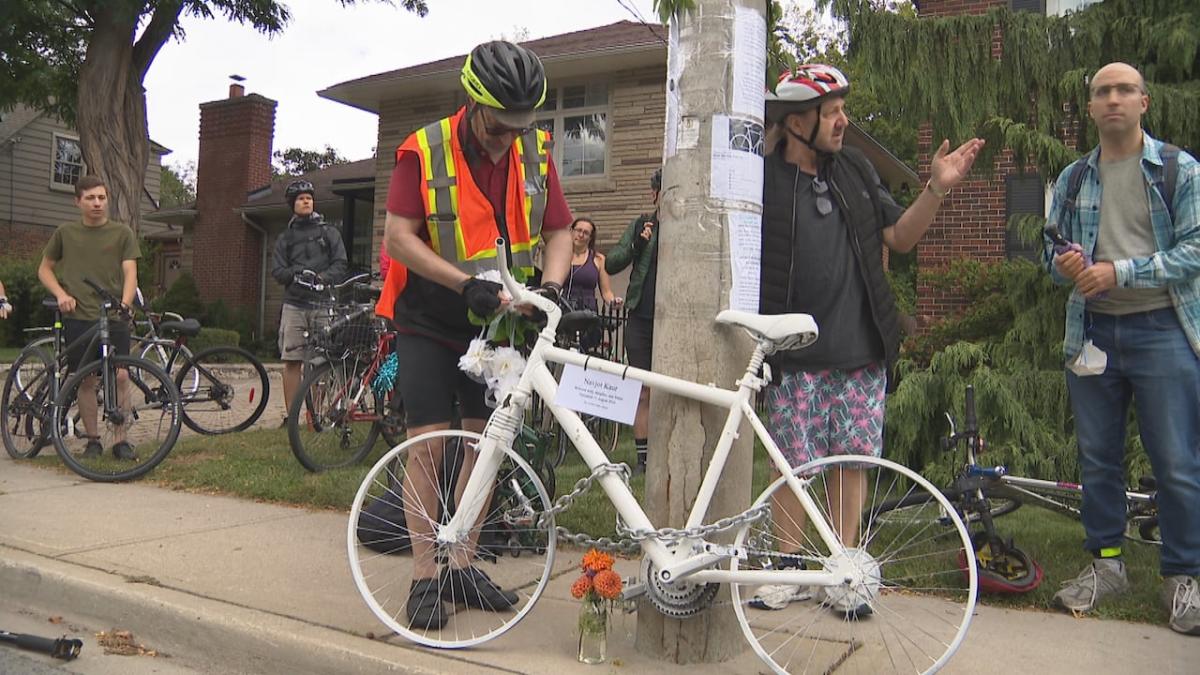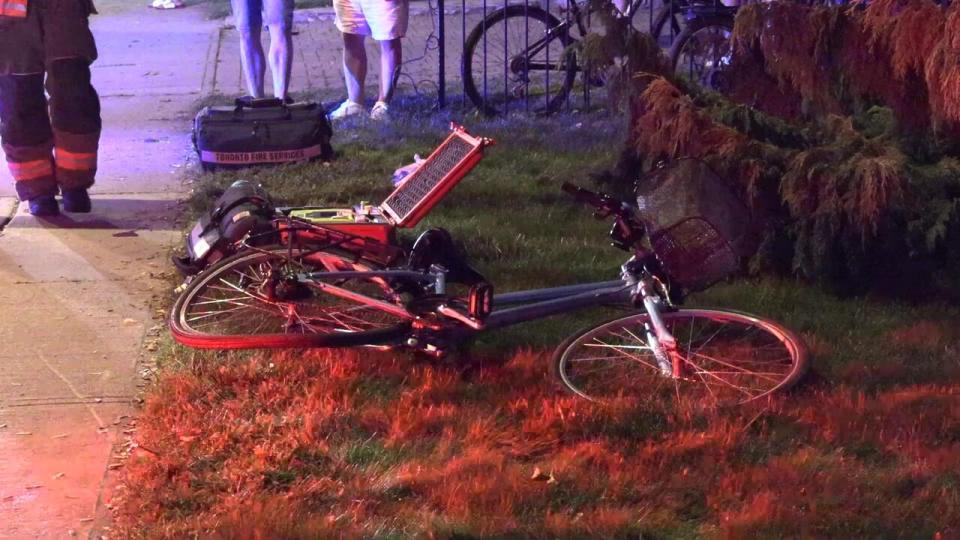


After a woman was struck and killed while riding her bicycle in Etobicoke late last month, dozens of cyclists gathered at the site of her fatal collision to honour her memory Saturday, saying Toronto’s cycling infrastructure has to improve.
The ghost bike ride was in honour of a 26-year-old woman who was struck by a motorist on Burnhamthorpe Road near Kipling Avenue on Aug. 24. She died of her injuries in hospital a week later. The motorist was later charged with careless driving causing death or bodily harm.
Joey Schwartz, who helped organize the ride, says the death was more evidence that Toronto needs better cycling infrastructure.
“It’s a gut punch,” he said. “Every single one of these crashes, these deaths, did not need to happen.”
The 26-year-old woman is the sixth cyclist to die in Toronto this year, the highest number of cyclist fatalities in the city in the last five years. In 2023, Toronto recorded only one cyclist death.

A 26-year-old cyclist died as a result of her injuries after being struck by a driver in Etobicoke on Aug. 24. The driver was later charged. Cyclists held a ghost bike ride in the woman’s honour on Saturday. (Jacob Estrin/CBC)
Janet Joy Wilson, who says she lives in the city and regularly rides to get around, says she gets emotional when she hears about cyclists dying on Toronto’s streets. She says all cyclists deserve to feel safe on public roads.
“The dangers within the city due to neglect of a safe and extensive and connected infrastructure is why we continue to have these memorial rides for people who should still be out there with their friends and family enjoying life,” she said.
At the ghost ride, local city councillor Amber Morley said it’s been challenging to get the community to agree on new cycling infrastructure.
“We’ve heard from folks all the way up to the premier’s office about why they don’t appreciate or want to see this kind of infrastructure on our streets,” she said.
City says rise in cyclist deaths ‘unexpected’
Despite the high number of cyclist deaths this year, the city has been working to make streets safer.
The city of Toronto introduced its Vision Zero strategy in 2016 with the goal of reducing traffic-related deaths and serious injuries to zero after 78 people died on the road in 2015. The city has introduced traffic-calming measures and improved cycling infrastructure since then, and this year’s Vision Zero budget of $79 million was the largest its ever been, according to city staff.
The city also implemented tougher fines this summer for drivers who block bike lanes, following the death of a woman in July who veered out of a bike lane on Bloor Street that was blocked by a dumpster.
Sheyda Saneinejad, who manages Vision Zero projects for the city, told CBC News this week that data shows fatal collisions on Toronto’s streets have been declining generally since 2016, and the number of cyclist deaths this year is “unexpected and quite concerning.”
Albert Koehl, with the Toronto Community Bikeways Coalition, said Saturday that the city isn’t working fast enough to improve road safety and the latest cyclist death is “another urgent call to the city to redouble its efforts to catch up to make our roads safe.”